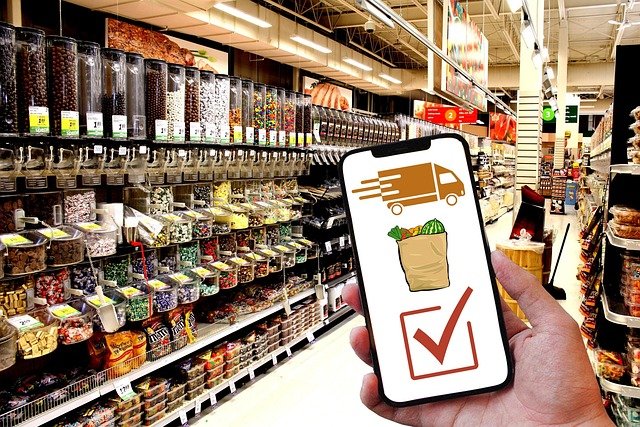Optimize Mobile Order Flows for Faster Purchases
Streamlining mobile order flows reduces friction and increases conversion by focusing on concise navigation, clear progress cues, and fast input methods. This article outlines practical steps for product and UX teams to accelerate purchases while keeping security, delivery transparency, and post-purchase flows intact.

Mobile commerce demands focused flows that let shoppers move from discovery to purchase in as few steps as possible. On small screens, every tap and keyboard interaction costs attention and time. A well-designed first paragraph for an article on mobile order flows should emphasize measurable improvements: fewer abandonment events, faster completion times, and clearer expectations around delivery and returns. To achieve that, product teams must balance speed with trust — preserving security, supporting coupons and subscriptions, and making wishlist and budgeting tools work without adding friction.
Mobile: How can order flows be simplified?
Designing for mobile means prioritizing actions and reducing optional complexity. Start screens should guide users to one clear next step: continue shopping, view cart, or resume a wishlist. Use adaptive layouts to surface relevant options based on user context — saved cards for returning buyers, subscription options for repeat purchases, or coupons when available. Minimize data entry by leveraging autofill, platform payment APIs, and progressive disclosure. Where budget-conscious shoppers may need comparison or wishlist features, keep those secondary so they don’t interrupt the purchase path. Fast animations, clear affordances, and immediate feedback on taps reduce perceived latency.
Cart: How to reduce friction?
The cart is a key decision point; simplify it by showing only essential details and a clear path to checkout. Consolidate line items, display applied coupons prominently, and provide simple quantity controls. Offer a persistent summary bar that keeps total cost and primary CTA visible as users scroll. For users managing budgets, provide estimated totals including taxes and shipping early to reduce surprises. Allow saving to wishlist or moving items to a later list without forcing a full page reload. For subscription or bundled items, offer inline explanations rather than redirecting to new pages.
Checkout: How to speed up payments?
Shorten the checkout to the fewest necessary steps: contact information, shipping, payment, review. Use single-page or multi-step patterns depending on complexity, but avoid unnecessary form fields. Integrate fast payment options like digital wallets and remember consented payment methods for returning customers. Validate inputs in-line and provide clear error messages to prevent repeated attempts. For coupon entry, allow auto-detection of eligible discounts or a single expandable field rather than a separate screen. Also consider guest checkout for quicker purchases while offering an easy post-purchase account creation flow.
Delivery: How to set clear expectations?
Transparent delivery options reduce cancellations and customer service friction. Present estimated delivery windows, shipping costs, and any restrictions before final confirmation. Provide alternatives like express, standard, or pickup where feasible, and show how each choice affects total price and delivery date. For subscription orders, display expected cadence and allow easy changes to delivery frequency. Include return policy summaries at checkout so buyers understand returns and any associated costs. Clear delivery expectations lower the chance of post-purchase dissatisfaction.
Security: How to protect payments and data?
Security must be visible but unobtrusive. Use recognized payment badges, two-factor or tokenized payments, and platform-native security APIs to reduce friction while building trust. Encrypt sensitive data and minimize storing payment details unless expressly consented to for faster repeat purchases. Make privacy and data-use statements concise and accessible. Fraud detection should run silently when possible; if verification is required, explain why and offer the fastest verification methods available. Secure flows that feel fast and trustworthy improve completion rates.
Tracking: How to provide real-time updates?
Post-purchase tracking reduces customer anxiety and support requests. Offer immediate in-app order confirmation, clear order IDs, and shipment tracking updates that can be accessed within the app or by lightweight links in notifications. Use push notifications or SMS sparingly and with user consent to communicate meaningful milestones: order confirmed, shipped, out for delivery, delivered. Allow users to track returns and refunds with the same transparency. Integrate analytics to measure where users drop off and which tracking messages correlate with positive retention.
Conclusion
Accelerating mobile order flows requires a mix of design discipline, platform integrations, and operational transparency. Prioritize fewer taps, faster inputs, and clear progress indicators while maintaining payment security and honest delivery expectations. Supporting features like coupons, wishlists, subscriptions, and budgeting tools can coexist with fast flows when they are implemented as optional, non-blocking enhancements. Continuous measurement of abandonment points and post-purchase satisfaction will guide incremental improvements that lead to faster purchases and more reliable customer experiences.





